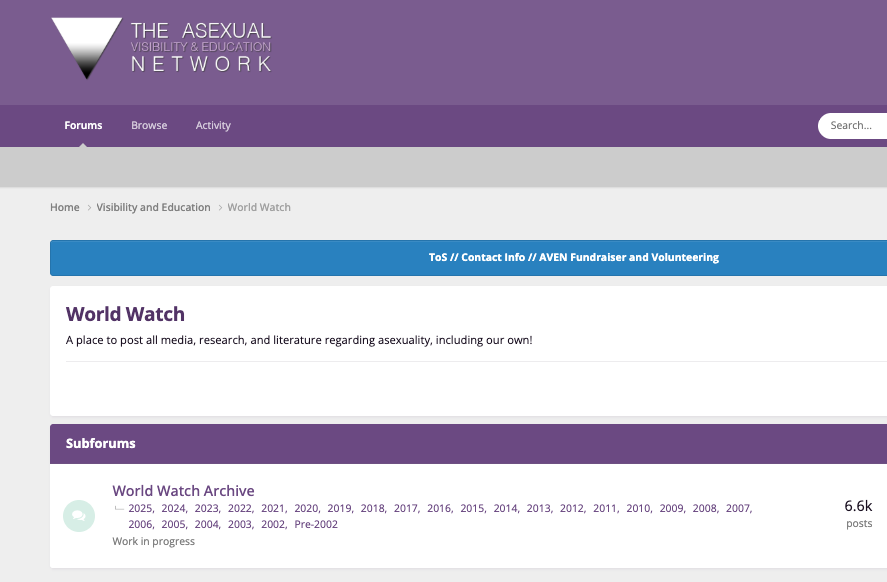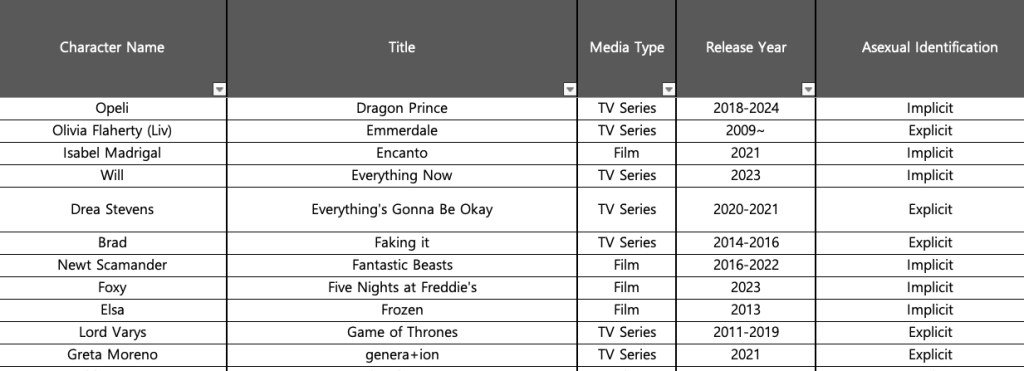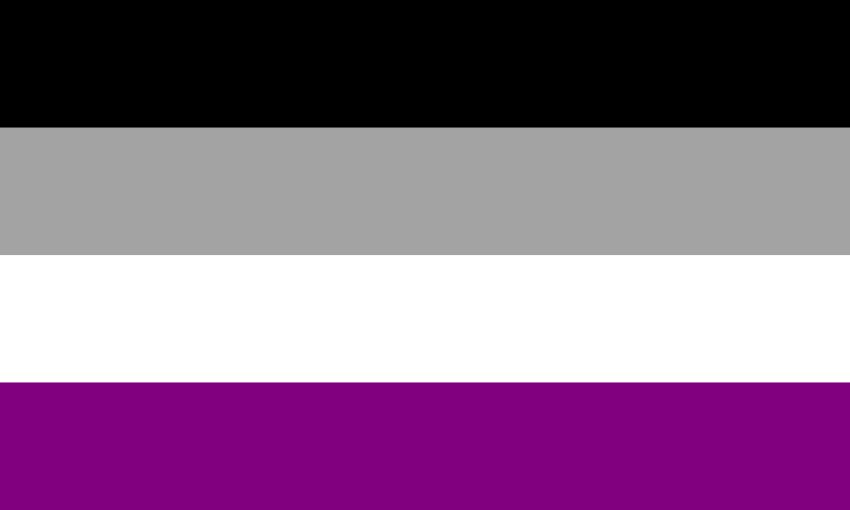By Ye Ju Ki
For my Scholars Studio fellowship project, I plan to trace and document portrayals of asexuality in contemporary media and build a website to visualize what has long remained invisible. As a doctoral student studying Media and Communication, the near absence of asexual characters in contemporary media has motivated my project, prompting me to question how asexuality has been represented on screen around the world since the 2000s.
Using the resources and tools provided at the Loretta C. Duckworth Scholars Studio, I aim to create a crowdsourced online website dedicated to understanding and visualizing asexuality, a sexual orientation that is often referred to as the invisible orientation (Decker, 2014). As a crowdsourced platform, it will allow the public to share their ideas and thoughts on both explicit and implicit asexual characters, thereby directly contributing to building the online archive.
Asexuality in Media
Asexuality is often referred to as the invisible orientation, due to the general lack of public discussion and common misconceptions (Decker, 2014). Asexuality is often misconstrued as a pathological disorder or a choice to be celibate, but asexuality is a valid, enduring sexual orientation characterized by experiencing little to no sexual attraction towards anyone (AVEN, 2025). When understanding asexuality, it is also important to note the distinctions between sexual attraction and romantic attraction, and the intrinsic desire to participate in sexual relationships and libido.
Asexuality was neglected from academic studies until the early 2000s. It has only been two decades since the first academic research with a sole focus on asexuality was published. Anthony Bogaert (2004) studied the statistical prevalence of asexuality, using the data from a national probability sample of British residents from 1994, and the study showed that about 1.05% of the national sample were asexual. Bogaert’s research marked the beginning of contemporary asexuality studies, and that 1% became the commonly quoted estimate for asexual individuals in any given population (Murphy, 2023).
When it comes to media portrayals of asexual characters on screen, that 1% becomes even smaller. The Gay and Lesbian Alliance Against Defamation (GLAAD), a non-profit LGBTQ media advocacy organization, has published Where We are on TV reports annually since 1996, analyzing the diversity and the number of queer characters on cable networks and streaming services. However, it was not until 2017 when asexual characters became a part of the analysis in these reports. Moreover, in the 2017 report, there were only two asexual characters out of 1,172 regular and recurring queer characters from that year, making up less than 1% of the whole analysis (GLAAD, 2017). This less than 1% proves that asexuality remains largely invisible, especially on screen, marking the lack of media portrayals of asexuality.
Collecting and Visualizing Data
Acknowledging the lack of asexual representation in contemporary media, the project integrates digital methods with media studies to systematically collect and analyze data on a large-scale. Using Web Scraper and Python for data scraping, I am gathering data from various online sources, including the Asexual Visibility and Education Network (AVEN), to identify which characters from film and television are mentioned to be asexual. As the largest asexual community online, encouraging open discussion about asexuality since 2002, AVEN provides not only comprehensive information and knowledge on asexuality, but also rich data on asexual people’s lived experiences through its forums. One of their forums is “World Watch” where community members post about media, research, and literature regarding asexuality.
As a starting point for collecting data and building a metadata for asexual representation in media, I am in the process of manually creating a preliminary list of both implicit and explicit asexual characters in films and television series and doing web scraping practice runs with Web Scraper. The list consists of asexual characters from Where We Are on TV reports published by GLAAD between 2017 and 2024, a thread from an AVEN, and asexual characters listed on the Wikipedia page “List of fictional asexual characters.”
In the AVEN forum World Watch, there is a pinned thread titled “Asexuality and Asexual Characters in Films & Series – a Collection” with over 200 replies and 36,100 views, as of October 2025. In the pinned thread, several AVEN members have been sharing both explicit asexual characters (“confirmed/canon”, meaning the character explicitly identifies as asexual or their asexuality was confirmed by producers, showrunners, or actors) and asexual-coded characters (“possible/headcanon”, meaning the audience has interpreted the character to be asexual despite the absence of asexual identification on screen). Some of the notable characters are Todd Chavez from BoJack Horseman and Issac Henderson from Heartstopper. I read through the thread to create a preliminary list, documenting any characters mentioned, and the thread makes up a substantial portion of the list. The list was then supplemented with GLAAD reports and the aforementioned Wikipedia page.

As of October 2025, the preliminary list created through such process consists of over 200 asexual characters in film and television. I have categorized these characters based on different entries, including whether they are in a film or a television series, whether they have explicitly identified as asexual or are asexual-coded, whether producers, actors, or showrunners have confirmed or denied the characters’ asexuality, whether they are regular, recurring, or temporary characters, and so on.
The preliminary list will be further expanded using data from the AVEN World Watch forum, which will be gathered using Web Scraper and Python. Data scraping will proceed after informing AVEN about the project, in compliance with AVEN community guidelines and their rules for using AVEN for research.

Making a Participatory Archive
Once the list of asexual characters is completed, including both characters that explicitly identify as asexual and characters that are asexual-coded, they will be organized and visualized into a website, documenting media portrayals of asexuality in modern media. I further aim to make the archive accessible to the public, allowing them to contribute to the list of asexual characters, comment their opinions, and interact with one another. This will not only encourage community engagement but also allow the project to be living and evolving.
An important component of this asexuality in media project is public participation, and it aims to reach an audience beyond academia, archiving the participants’ experiences with media. Viewing contributors of the archive as active participants and knowledge producers, it is thus vital to trace media portrayals of asexuality and create an archive where people can participate freely as a part of this project with an end goal of understanding asexuality better.
References
Bogaert, A. (2004). Asexuality: Prevalence and associated factors in a national probability sample. Journal of Sex Research, 41(3), 279-287.
Decker, J. (2014). The invisible orientation: An introduction to asexuality. New York: Skyhorse Publishing.
GLAAD. (2017). Where we are on TV: 2017-2018 season. Retrieved from https://assets.glaad.org/m/4dc56038673033fd/original/GLAAD-2017-18-Where-We-Are-on-TV.pdf
Murphy, K. (2023). Asexuality and Freudian-Lacanian psychoanalysis: Towards a theory of an enigma. New York: Routledge.
